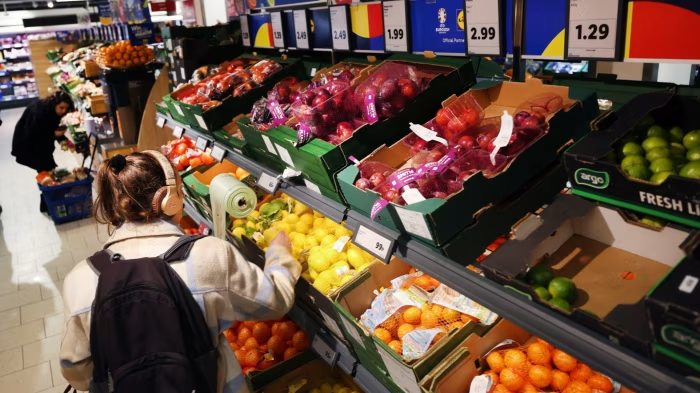
Due to the fact that household energy bills decreased by a smaller amount than they did in July 2023, the annual inflation rate in Britain increased to 2.2% last month, marking its first increase since December of the previous year.
Following a period of two months during which the Bank of England maintained its aim of 2%, the chosen measure of the cost of living by the government has once again increased, according to data provided by the Office for National Statistics (ONS).
The increase, which was predicted by both the bank and the city, was a little lower than the rise of 2.3% that was projected.
Cheaper hotel stays contributed to a 0.2% decrease in prices in July, which was less than the 0.4% decrease in prices that occurred in July 2023. In that month, energy bills dropped significantly, which resulted in an increase in the headline rate of inflation.
“Inflation ticked up a little in July, as although domestic energy costs fell, they fell by less than a year ago,” said Grant Fitzner, the chief economist for the Office of National Statistics at the Treasury. The costs of hotels decreased in July, following a period of robust growth in June, which helped to somewhat offset this.

Core inflation, which does not include food, energy, alcohol, or tobacco, increased by 3.3% in the year to July, which is a decrease from the prior month’s increase of 3.5%. The bank’s interest rate setters looked closely at the rate of inflation in the services sector, which fell from 5.7% to 5.2% in the previous month.
Hotels had a decline of 6.4% in July, compared to an increase of 8.2% in the previous year. This decline in hotel costs was a major contributor to the decline in inflation in the services sector.
“Inflation undershooting the Bank of England’s expectations will be seen as a positive sign that price pressures are continuing to normalise for households and businesses,” said Martin Sartorius, a lead economist at the CBI, which is an organisation that advocates for the interests of employers.
A sustainable return to the 2% target will be less likely to be derailed by domestic price pressures, according to the data that was released today, which will provide the monetary policy committee of the Bank with some measure of confidence.
Earlier this month, the Bank expressed its anticipation that the consumer price index, which is a measure of inflation, will continue to rise and reach its highest point of approximately 2.75 percent before beginning to decline once more.
The Chief Secretary to the Treasury, Darren Jones, made the following statement: “The new government is not under any illusions as to the magnitude of the challenge we have inherited, with many families still struggling with the cost of living.” Because of this, we are making the difficult choices that we need to make right now in order to repair the foundations of our economy so that we can rebuild Britain and achieve progress in every region of the country.
The statistics from the Office of National Statistics coincide with the publication of a paper by the Institute for Fiscal Studies, which demonstrates that during the height of the cost of living crisis between 2021 and 2023, households with lower incomes in the United Kingdom were subjected to much higher rates of inflation in food prices than households with higher incomes.
Food and non-alcoholic beverage costs have increased by 1.5% in the year leading up to July 2024, according to the ONS, which is the same rate of increase as the year leading up to June.
According to the ONS, the annual rate did not decrease for the first time since March 2023, despite the fact that the figure for June was the joint lowest annual rate since October 2021, when it was 1.3%.